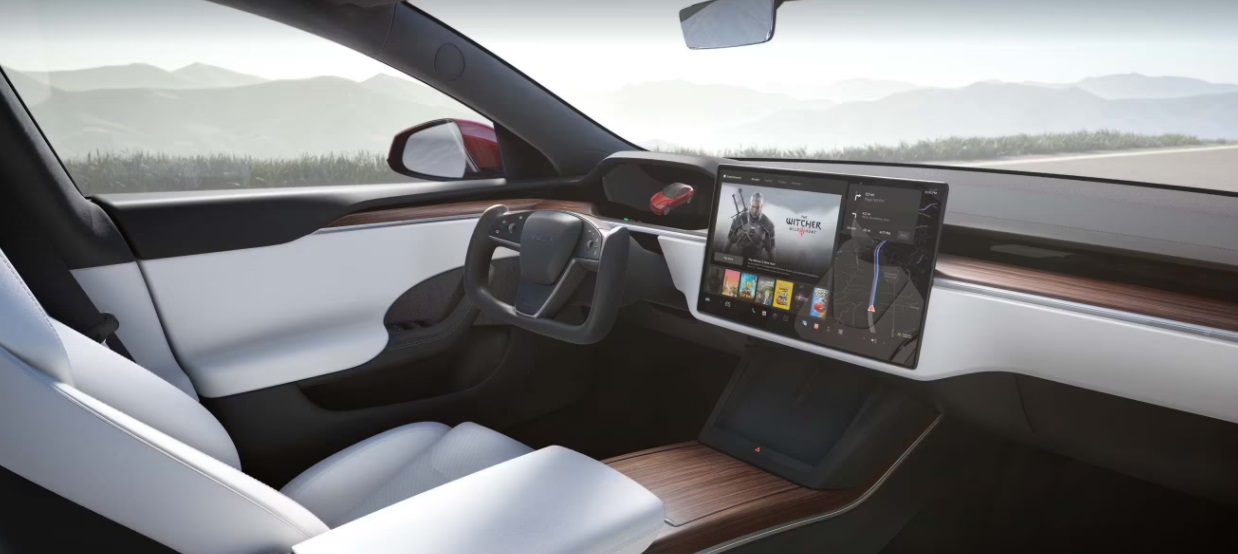Tesla and the specter of phantom braking

The US road safety agency has collected 758 reports of phantom braking on Tesla's autopilot. The Elon Musk House will have to give an answer on this by June 20
The quarrel between the auto giant EV Tesla and the National Highway Traffic Safety Administration (Nhtsa), the US federal agency that has never stopped making fleas on Elon Musk's company, is enriched with a new chapter.
In February, NHTSA initiated a preliminary assessment of 416,000 Tesla Model 3 and Model Y vehicles for the period 2021-2022, after the agency received 354 complaints about so-called phantom braking, or sudden nailing that the autopilot performed for no reason while the Tesla was on the move. The reports have now almost doubled, having reached the number of 758 owners of the hugely popular Texas draft car who complain of having experienced similar circumstances and by June 20 the American manufacturer will have to formally respond on the alleged malfunction and its possible causes.
THE ETERNAL DIATRIBA BETWEEN TESLA AND THE NHTSA
As we said, it is not the first time that the NHTSA has put Tesla under the magnifying glass and not only for the alleged ghost braking. According to the US agency, in fact, Autopilot and related advanced driver assistance systems (ADAS) would have difficulty in recognizing vehicles in emergency stop (such as for example broken down cars with the four arrows activated). In this regard, the National Highway Traffic Safety Administration would have put in the file twelve accidents that could depend on these circumstances.
In this case, the problem would concern over 750 thousand Tesla sold in the 50 American states. In the last letter addressed to the Texas house (after the quick move from California, whose administration was accused by the patron of putting too high taxes), the authority had asked Musk's company to explain in detail the technology that Tesla uses to guarantee to its cars the recognition of a vehicle in emergency stop.
THE MALANDRINO DECEMBER UPDATE
Also NHTSA in recent months had promptly turned on a headlight on a firmware update of the cars on the market with which it was possible to play from the front monitor while the car was in motion, representing a possible source of distraction for the driver. The purpose was obviously to entertain the occupants, but the position of the front viewer would also allow the driver to play while traveling, seriously endangering both his own safety and that of others.
It seems that Tesla with a disclaimer had warned of the dangers and had subordinated the use of the entertainment system to passengers only with a combination of actions via touch screen, but a tap on the monitor was enough, in fact, to start the video games (too little to a car so intelligent that it is able to detect the presence of passengers on board thanks to the sensors under the seats). As soon as the Nhtsa started its own investigation, Tesla released a new update that once again made it impossible to use video games on the go.
WHAT WE KNOW ABOUT THE GHOST BRAKES OF THE TESLA
And now we come to the final matter of the dispute. In February, the NHTSA had detailed the problem of phantom braking verified on Tesla by stating that "complainants report that rapid deceleration can occur without warning, randomly and often repeatedly in a single driving cycle." This is a problem well known to Tesla. In fact, in May 2021, Tesla CEO Elon Musk said that eliminating the radar sensor from the partially automated driving system would solve the problem once and for all.
But apparently it was not. System updates don't seem to have solved the problem either. Many US customers also claim that their complaints were not taken into consideration by the EV auto giant, which replied that these are normal braking performed by the autopilot to avoid obstacles. Among the reports collected in the minutes by the American body stands that of the owner of a Tesla Model Y of 2021 who told the NHTSa that, while he was on the highway at 80 miles per hour, "the car braked sharply and decelerated from 80 mph to 69 mph in less than a second. The braking was so violent that my head jumped forward and I almost lost control of the car ”.
On June 20, Tesla will be called upon to have its say on these and other complaints, but above all it will have to bring the preliminary tests carried out before marketing to the attention of the authorities. The cataloging of cases should at least allow us to understand under what circumstances Tesla are susceptible to phantom braking. It is also not clear if Autopilot was engaged every time they occurred.
There are so many questions that are looking for answers: had those cars undergone repairs by unauthorized workshops? Can the vehicle's sensors be misled by objects on the road or by the road itself, when it has anomalous conformations? Could oversize vehicles traveling on other lanes distort perspective and mislead the on-board computer? How heavy is human distraction? For the institution, however, the possible problem would include 416,000 vehicles from the years 2021 and 2022.
This is a machine translation from Italian language of a post published on Start Magazine at the URL https://www.startmag.it/smartcity/tesla-e-lo-spettro-delle-frenate-fantasma/ on Thu, 09 Jun 2022 06:51:31 +0000.
